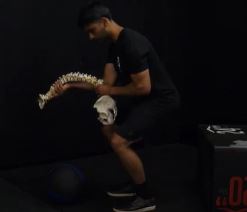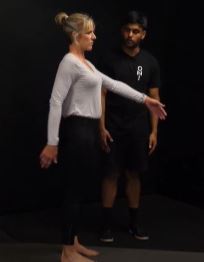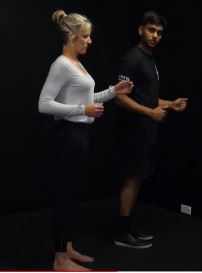Tips For Lifting, Walking And Running For Better Posture in Porirua NZ

Lifting Posture
Lifting in Porirua NZ is a basic functional action used by many people today. It is important to express healthy postural habits when lifting, especially if your job requires you to do so throughout the day or when lifting heavy objects. Incorrect lifting through bad posture/form can lead to injuries or pain and stiffness over time. If you are lifting throughout the day it is a good idea to warm up. Doing bodyweight squats can be a good idea to get the legs moving while keeping your spine straight.
General guidelines such as:
Keep a wide base of support when lifting
- Feet should be roughly shoulder width apart to allow good form when lifting through your legs.
Squatting down to grab object
- Make sure you squat down by bending your knees and hips to get to the floor and not bending your spine.
- Looking forward and keeping your chest up helps to maintain a straight spine throughout the lift.

Gripping the object
- Make sure to get a good grasp on the object while you are squatting down, this makes sure you won't have to adjust your grip too much while you are lifting the object up.
Lifting
- Make sure you use your legs to lift the object and not your spine. Start by straightening your knees and hips and maintain good posture by looking straight with your chest up.
Holding and moving
- Hold the load as close as possible to your body to make it easier to maintain it while you are carrying it around or placing it to its destination.
Placing object
When placing the object you should maintain good posture and use your arms to reach out and place the object. If the object is at a lower level make sure you squat down to get to the level before you place the object. You should also keep the object as close as possible to your body and place it down.
Walking Posture
Walking is a basic action used as our body's own form of transport. Expressing good posture while walking allows us to move more efficiently, helping reduce tension. Here are some key points on how to make the most out of your walking posture whether it's for exercise or everyday movement.
General guidelines such as:
Keep your head up – allows you to maintain good posture with your core and less slouching.
- Focus on standing tall with your chin parallel to the ground and your ears are roughly above your shoulders.
- An easy way to do this is to imagine a string pulling your head gently towards the sky/ceiling.

Keep your shoulders down and back – This allows your to keep your head in an ideal position
- This can help if you tend to slouch and lean forward while walking- this allows tension in your upper back as you eyes will always try to look forward and thus creating tension.
- An ideal shoulder position sets up your arms to swing appropriately.
Engage your core
- Engaging your core will help to maintain your head and upper body posture while walking.
- Pull your belly button towards your spine – this can help if you have slight pain while walking and also give you more balance and stability while you walk.
Swing your arms
- Gently swing your arms from your shoulders and not your elbows.
Heel – toe walking
- Strike the ground with your heel first then roll through your foot towards your big toe.
- When pushing off – make sure to push off with your big toe finishing last.
- Try to avoid flat foot walking/stomping or striking the ground with your toes first.
Running posture
Running is a great form of exercise and when performed with good posture, can increase length/duration of run, reduce fatigue, and help with aches and niggles while running. Here are a few key points when running to use as a guideline.
General guidelines such as:
Look ahead
- Don’t look at your feet while running as this allows you to not see what you are running towards and risks falling.
- Focus on looking 10-20 feet ahead – this allows you to easily maintain good head and spine posture while running.
- Don’t jut your head forward as this can create tension in the upper back.

Arms
- Keep your wrist as waist level and elbows bent to 90 degrees.
- Avoid keeping wrist up by your chest – this can make you feel more tired while running
- Relax your hands as the tension can go up your arms and into your neck.
- Avoid arm side to side swinging – this means you are not breathing properly.
- Arms should swing back and forth from your shoulder.
Torso
- Keep your head up and back straight
- Try not to lean too far forward or back as this can start to affect your running form.
- When you feel you start to slouch, push your chest up.
- Keep your shoulders square – avoid hunching as this can affect your breathing making it more difficult and more tired.
Bouncing
- Try to avoid bouncing too much as this wastes a lot of energy – causing your legs to absorb more force and will fatigue faster.
References:
Roland, J. (2020, January 16). How to Walk Properly with Good Posture. Healthline; Healthline Media. https://www.healthline.com/health/how-to-walk#tips-for-walking-properly
OFFICE HOURS
Monday
9:30am - 1:30pm
Tuesday
7:00am - 6:00pm
Wednesday
9:00am - 6:30pm
Thursday
7:00am - 6:00pm
Friday
7:00am - 2:00pm
Saturday
8:00am - 2:00pm
Sunday
Closed
Chiropractic Balance
10/99 Mana Esplanade, Paremata,
Porirua, NZ 5026




